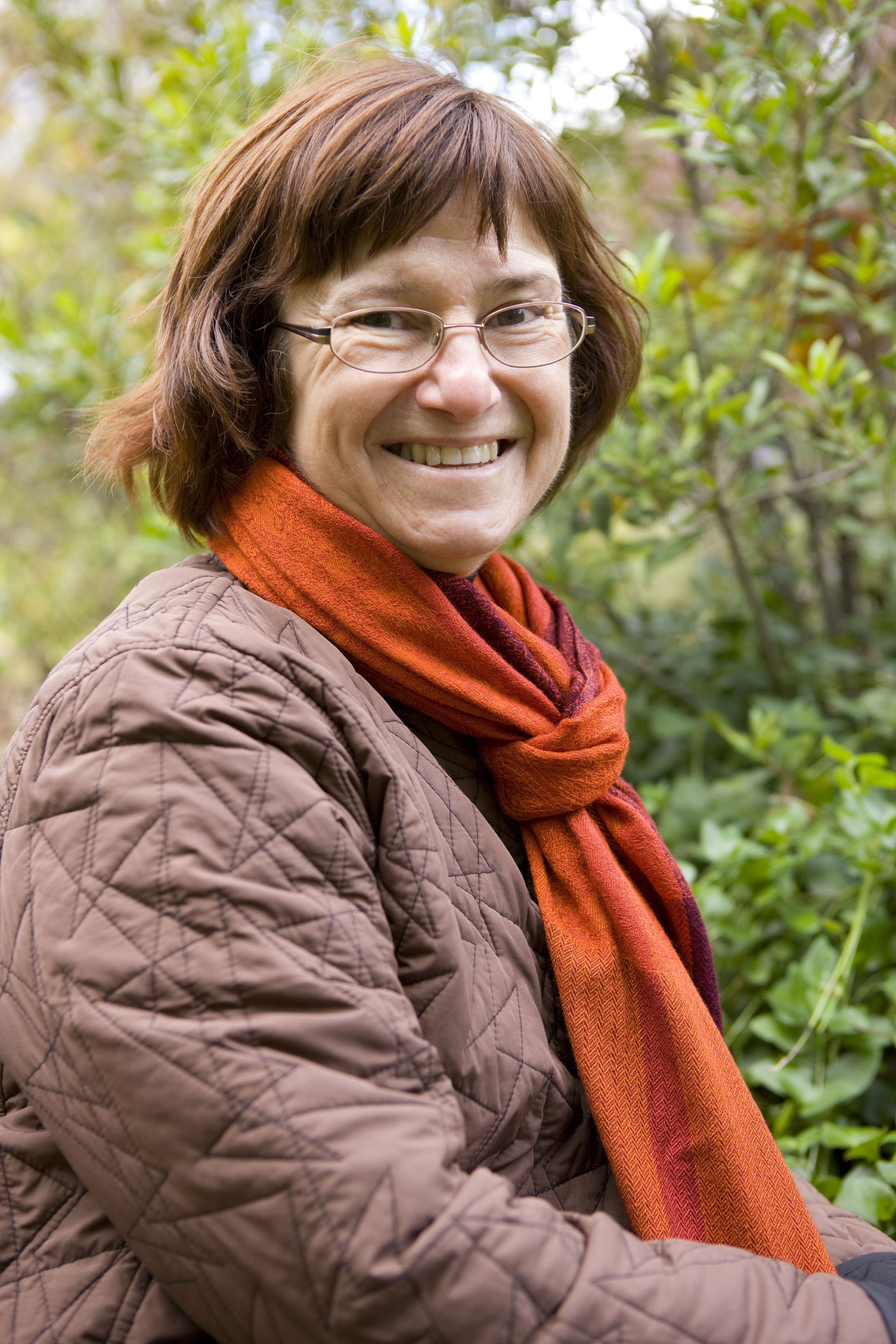Mary Hughes is a familiar figure around the University of Virginia's Academical Village, walking her black Scottish and white West Highland terriers on the Lawn and in the Pavilion Gardens – historic public spaces she is in charge of conserving, preserving and managing.
Her body of work as the University's landscape architect is now being recognized by her professional peers in the form of the 2012 LaGasse Medal. Bestowed by the American Society of Landscape Architects, the medal recognizes notable contributions to the management and conservancy of natural resources and/or public landscapes.
Hughes, a fellow of the society, will receive the medal at a banquet in Phoenix in October. The award is named after Alfred B. LaGasse, past executive director of the American Institute of Park Executives and executive vice president of the National Recreation and Parks Association.
"I was completely taken by surprise," Hughes said. "I am enormously honored that my colleagues put this nomination together.
"I feel very honored that people have the tremendous respect for me and my work and that they think I have done something worthwhile. I have a feeling of accomplishment and validation."
In nominating Hughes, her peers cited a variety of her accomplishments at the University, such as the award-winning stormwater management plan at the Dell, the Kitty Foster Memorial Garden at the South Lawn Project, the preservation of the Pavilion Gardens and the Summer Historic Landscape Preservation Institute.
They also cited her achievements before coming to the University in 1996, including being the first regional historical landscape architect for the National Park Service's Midwest Region, contributing to the park service's cultural landscape treatment guidelines and co-editing the book, "Design with Culture: Claiming America's Landscape Heritage."
"For the past 16 years, Mary has guided the campus both in its preservation as a historic place and in its evolution as home to one of the nation's most vital 21st-century universities," wrote Mark H. Hough, the campus landscape architect at Duke University in Durham, N.C., in his letter of recommendation. "Through her leadership, the campus – which had evolved over time into a composite of disparate pieces after decades of poor planning and design decisions – has been transformed into a truly unified and coherent landscape whose beauty extends beyond Jefferson's fabled Lawn."
"This recognition is important for Mary and this office," University Architect David J. Neuman said. "It also shows that U.Va. is out in front with this sort of thinking."
He praised Hughes for her management and conservation of the physical and cultural landscape of the University. "That notion of cultural landscape is important. She has a fine sense of design to work with a college campus. It is buildings and grounds, a tapestry, and Mary works with the grounds."
Hughes was nominated by many of the people she worked with during the past years, including Warren T. Byrd Jr., a professor emeritus of landscape architecture and a principal in Nelson Byrd Woltz Landscape Architects, which helped with the stormwater project.
"For me, the most important contribution Mary Hughes has made is her role in seeing the University's innovative stormwater master plan through to realization," Byrd wrote in his recommendation. "The Dell was her inspiration. It was her vision that conceived of the Dell as the ideal demonstration project to support the larger stormwater plan for the campus."
Hughes said she is especially proud of that work. "The Dell is something that stands high at the top of my personal list of favorites," she said – a list that she said would also include a 2007 Groundswide historical preservation plan, funded in part by a matching grant from the Getty Foundation, that lays out a historical framework of the development of the Grounds over the years, to put more contemporary changes in context.
Cheryl Barton, a past president of the American Society of Landscape Architects who worked with Hughes on the South Lawn Project, praised her ability to meet current needs while preserving the historic landscape for community education.
"Mary is a fierce, tireless and diplomatic defender of the public landscape," Barton wrote. "She has a particular talent for bringing nonlandscape architects into the conversation and inspiring them to be mindful about the broader values of place."
Hughes also was cited for bringing out historical context in landscapes.
"Hughes encouraged research and archaeology on the history of a free-black settlement, founded in the 1830s by Katherine (Kitty) Foster, adjacent to and below the U.Va. Academical Village," wrote Elizabeth K. Meyer, an associate professor in the Department of Landscape Architecture. "This resulted in new awareness for the way one could read race and space topographically in the university landscape."
Hughes received her master's degree in landscape architecture from U.Va.'s School of Architecture in 1987. She also received a master's degree in comparative literature from the University of North Carolina-Chapel Hill and a bachelor of arts degree in French from Wittenburg University. She is also a lecturer in the Department of Landscape Architecture.
"The bottom line is that what Mary has been able to accomplish so far in her career is nothing short of extraordinary," Hough said. "Possibly unbeknownst to her, she has become a role model and inspiration for those of us who work as landscape architects and stewards on campuses and other cultural landscapes across the country."
– by Matt Kelly
Media Contact
Article Information
August 10, 2012
/content/uvas-landscape-architect-wins-major-peer-awarded-medal

